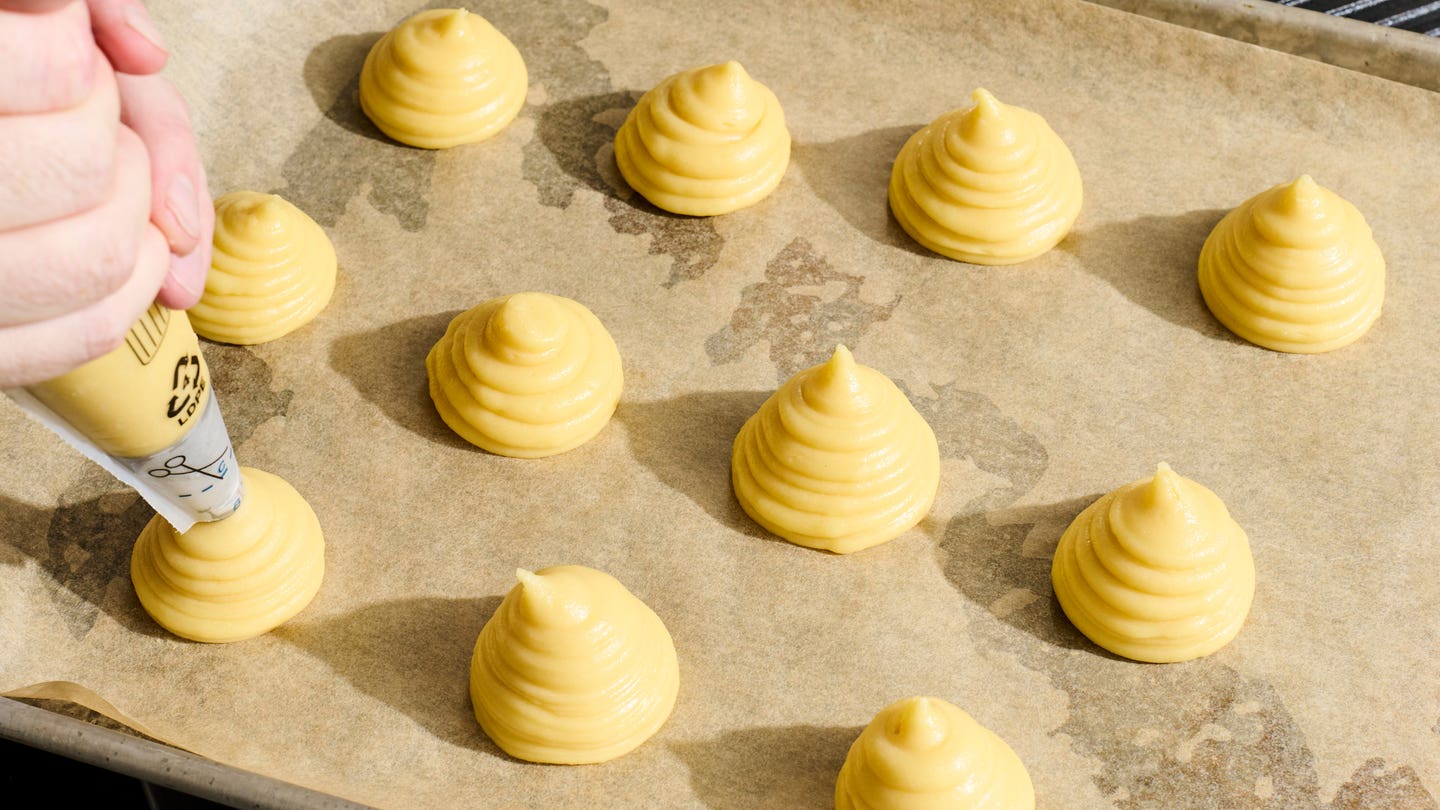
Preserving Summer
In Russia, where abundance is elusive, the art of pickling keeps flavors alive.
Two years ago, I spent four days on a cruise down Russia's Volga River. The trip, organized by my old college friend George McGurn, former dean of Boston University's School of Management, grew out of his current role as an adviser to Russian businessmen. There were about sixty consultants from all over Russia aboard, and me—and my attempts to steer the conversation to food were politely ignored. Until, that is, I met Valentin Alexandrov. A jolly, pink-cheeked college director, Alexandrov also happened to be an expert on one of the staples of Russian life: pickles. As we compared notes about the best cooks we have known—in both cases, our mothers—he raised his glass of vodka in a toast, to propose that they might be enjoying, in heaven, a shot of vodka and a bite of pickle.
At the time, Alexandrov oversaw the community college in Mcensk, a city with a population of about 50,000, located south of Moscow. To illustrate the work done at the college, he later sent to McGurn's Moscow apartment a huge wooden box filled with a wondrous array of pickled goods—pale green cabbage, crunchy cucumbers, sliced onions, asparagus as thin as pencils, tomato-flavored eggplant, and wild mushrooms. There were sweet preserves too—cinnamon apples and wild strawberry jam. When I called to thank him, he insisted that I come to the college someday to see Russian pickling in all its glory. I would someday, I promised.
Pickling, called Russia's national pastime, has long been a way of coping with the country's food shortages—the legacy of a short growing season and, under the Soviets, a chaotic harvesting and distribution system that sometimes left crops rotting in fields. These shortages have eased in recent years, but pickling and other forms of preserving —still the best way to ensure a supply of produce all year long—endure.
All over Russia, in the countryside and in the cities alike, preserving builds to a fever pitch during the autumn harvest. Kitchen cupboards are filled with pale green jars stuffed not only with pickles, but with sauerkraut, fruit compotes, relishes, jams, syrups, and salads in vinegar. Much of the produce is homegrown on dachas, the Russian vacation homes that for many are a legacy of the Khrushchev era, when every city dweller was promised 300 meters of land in the country. There, on the weekends, children help to harvest, while back in the city, the women prepare to pickle the vegetables, turning every spare inch around their houses into makeshift workstations. "Women have a way of remembering things that men don't," Alexandrov told me. "That is why they are endowed with the stewardship of the pickling tradition. They remember, year after year, the recipes of their mothers and grandmothers, and pass them on to their daughters."
A year after my Volga trip, I am met at the somber Moscow airport by George McGurn—who, like most dignitaries and foreign businessmen in a country plagued by gangland-style crime, is accompanied by a bodyguard. As we drive through Moscow, we see a city giddily reveling in a real-estate boom. Every fourth building seems to be under reconstruction; many of them have been freshly painted yellow, peach, or lime green. George tells me how newly revived parks and public gardens provide recreation areas for a population with increasing leisure time.
Another friend of mine, Grace Kennan Warnecke—whose father, George Kennan, was the American ambassador to Russia during the early years of the Cold War—has suggested that I visit with her friend Alla Kolodzei. Alla and her sister Tatiana have agreed to show me pickling, Moscow-style. First we go to the Danilov Market, a major Moscow food center, to shop for supplies. I am dazzled by the sight of a stand operated by a spirited group of Dagestani women who pickle produce grown in small plots in the northern Caucasus mountains: Garlic in beet juice, grape leaves, eggplant stuffed with shredded cabbage and carrots, pickled red tomatoes, and coleslaw brightened with pomegranate seeds are displayed in gigantic mounds. At another stand, we watch Alla choose small, firm cucumbers. She moves with determination from vendor to vendor, until she has assembled the perfect bouquet of herbs—flowering dill, horseradish, and cherry leaves—that she'll use in her pickling.
We return to the sisters' apartment, filled with art that Alla daringly collected from painters outlawed under the Soviets. Their three-bedroom apartment once housed three government-chosen families; today the sisters have the luxury of sole proprietorship. "To have survived life in a communal apartment," Tanya remarks, "is to have a highly developed sense of black humor."
Alla boils water for washing the cucumbers, noting that the old pipes in Moscow are made of stuff you don't want to think about. A Stalin-era icebox sputters next to a more modern one. Alla scrunches a stiff piece of paper to show me how pickles should sound when eaten. In a gesture that reminds me of a sculptor admiring a piece of marble, she holds a sterilized jar up to the window. A large horseradish leaf goes in first, for decoration and for its haunting flavor, followed by peeled garlic cloves. "When you don't have a diplomatic dinner," Alla notes, "the pickled garlic is wonderful to eat." She trims the tough tips from the cucumbers and adds them. "Not too much dill—it kills the perfume of the other leaves," she says, adding a few sprigs. Next she pours in boiling water and adds salt. Salt or vinegar—or both—are the curing agents commonly used in pickling vegetables. Last, black peppercorns, cherry leaves, and a bay leaf are added for seasoning. She puts a flat lid loosely on top of the jar, which is set aside to cool completely before the top is secured. The method of sterilizing the jar, and the heat processing of the sealed jar, are vital to safe and successful pickling, ensuring that the food will be properly preserved—and will remain edible—for several years to come.
When the job is done, Alla breaks out dense brown bread and beluga caviar from the stylish pre-Revolutionary era Eliseevski Gastronom, a gourmet food store that was well stocked even during the Soviet regime. We toast with glasses of vodka to the delight we have found in each other's company—to the joy of women, once divided by politics, now working side by side. There is a moment when we are all fighting back tears, thinking of hatred vanquished, and we raise our glasses once again.
The following day, Valentin Alexandrov sends a sleek black Russian Volga to carry me on the five-hour ride south to Mcensk, where he now serves as mayor. The car passes miles of apple and cherry orchards and fields of melons, sprouting from the fertile black earth. The new capitalist spirit flourishes along the road as well, where grandmotherly women, called babushkas, sell buckets of apples. Clusters of dachas appear every few miles—green and blue wooden houses with decoratively carved shutters. In the distance, against an ominous background of power-plant steam, I see long stretches of birch forests, and, near them, herds of cattle tended by Russian cowboys in leather chaps and floppy hats. Just past the town of Tula, where Tolstoy wrote War and Peace, the car pulls up to a barely functional and hardly inviting onetime resort for Soviet automotive workers. The cement-block buildings are brutally grim. My room has neither hot water nor a working toilet, a stark example of crumbling post-Soviet infrastructure.
We have lunch at the college, and, afterwards, I am invited on a mushroom-gathering outing in a birch forest by Pavel Prutnikov, the college director. The college staff and their friends seem to be dressed more for cocktails than foraging, with several women in high heels and purses slung over their shoulders. The mushrooms that we carefully pluck from the forest floor will be used later in a pickling demonstration.
At nine the next morning, with great fanfare and an apparent lack of regard for the early hour, Alexandrov offers me champagne and chocolates before our tour of the college. On the way, we stop at a privately owned field to watch babushkas wielding sickles to harvest firm, pale green cabbages the size of cannonballs. I am the first American these women have seen. They giggle and gossip about my dress and my interest in what is so commonplace to them. As we drive away, we see them sharing my present of American candy bars.
Back at the school, Natalia Filatova, who has taught pickling for 27 years, has gathered several students for a demonstration. The tools spread out on the classroom counters—corers, knives, and peelers—are old-fashioned yet efficient, and procedures are demonstrated with the utmost care. The mushrooms we'd picked the previous day are loosely chopped, cooked in oil and salted, then stuffed into jars that are sealed and placed in boiling water for 30 minutes (a recipe not recommended by the USDA, incidentally). Into separate jars go squash seasoned with garlic, julienned peppers, and slivers of blanched carrots. Each is filled with a salt or vinegar solution, and spices.
That afternoon I am to meet two women who work with Prutnikov. They are both Virgos, they tell me, and in love with everything red. Dimpled Raisa Izotova, with her sprayed hair, dangly jewelry, and hand-embroidered apron, is a master pickler. Irina Yakusheva is her attentive student. The pickled cabbage Izotova shows me is surprisingly simple to make—a matter of tossing shredded cabbage with sliced carrots and then mixing them with salt and spices. Bay leaves, allspice, and cloves go into the jar, then Izotova pushes the cabbage down hard with her fingers, to draw juice. "You can put it in the refrigerator or a cold basement, and it will be ready in two to three months," she counsels. We pickle several other vegetables from her dacha garden, including eggplant with tomato sauce, and finish with chopped apples packed with sugar.
The day I leave the college, I am given an assortment of pickles much like the one sent to me in Moscow. I am dismayed at the airport to learn that the heavy box will cost $100 in excess baggage fees, so instead I ask for a crowbar to open the crate, then lift out my favorite jars and stuff them into my carry-on bag.
In the middle of my dining room table in San Francisco, I now have this collection of pickled vegetables. I am tempted to eat them, but I leave the jars filled with green beans, yellow squash, and mushrooms to glimmer a few weeks longer. They give me an excuse, when guests visit, to recall for them how a simple custom can transcend politics.
Keep Reading
Continue to Next Story










